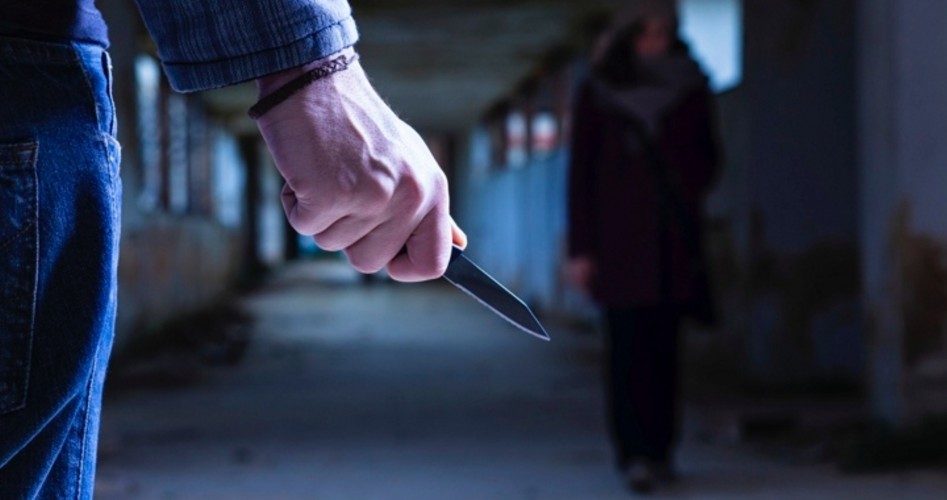
It’s against the law to carry a knife in England. As you would expect, knife crime is going up.
“Police recorded 26,370 offences in 2014/15, up from 25,974 the previous year,” the BBC reported on July 16.
Specifically, the BBC reports that “possession of knife offences rose by 10%, sexual assaults with knives went up 28%, and knife assaults increased by 13% from 11,911 to 13,488 offences.”
Quick to respond to the uptick, officials on July 17 instituted new harsher punishments for owning a knife.
According to the BBC report, the new laws mandate that “adults in Englannd and Wales convicted more than once of being in possession of a blade face a minimum six month prison sentence and a maximum of four years.”
The head of a British victims advocacy group believes that the way to end the increase in knife-related crimes is to teach people how dangerous it is to carry blades.
“After years of success in driving knife crime down, this rise is a worrying development and efforts to educate people about the dangers of carrying knives must be stepped up,” advised Mark Castle, chief executive of Victim Support.
History isn’t on the side of those who think banning a weapon will lead to a decrease in violent crime committed with that weapon.
Consider this evidence on the effect that outlawing handguns had on homicide rates in England presented by the Crime Prevention Research Center:
Every place that has banned guns has seen murder rates go up. You cannot point to one place where murder rates have fallen, whether it’s Chicago or D.C. or even island nations such as England, Jamaica, or Ireland.
For an example of homicide rates before and after a ban, take the case of the handgun ban in England and Wales in January 1997. After the ban, clearly homicide rates bounce around over time, but there is only one year (2010) where the homicide rate is lower than it was in 1996. The immediate effect was about a 50-percent increase in homicide rates. The homicide rate began falling only when there was a large increase in the number of police officers during 2003 and 2004. Despite the huge increase in the number of police, the murder rate still remained slightly higher than the immediate pre-ban rate.
There’s another nation in the British Commonwealth that also proves the point made by these statistics: Australia.
In 1996, an Australian man named Martin Bryant killed 35 people and wounded 21 others during an armed rampage at a tourist site in Tasmania. Bryant used two semiautomatic weapons in the attack.
Australian gun laws were already very strict when Bryant committed the Port Arthur massacre. The laws in effect at the time required applicants asking for permission to buy a gun to provide a “genuine reason and need for owning, possessing or using a firearm.”
The list of government-approved “genuine reasons” included police and security work, hunting, controlling feral animals, collecting, and target shooting.
Noticeably missing from the Australian statute: personal protection. This omission brings up the question of whether the number of victims of the Bryant shooting spree might have been a bit lower had one of those caught in the crosshairs had a means to end the slaughter.
After the election of Prime Minister John Howard in March 1996, the Australian parliament passed the National Firearms Agreement (NFA) which banned all semiautomatic rifles, all semiautomatic shotguns, all pump-action shotguns, and imposed severe limits on the possession of all other weapons.
In 2003, the Brookings Institution published a study of homicides in Australia after the passage of the National Firearms Agreement and the enforcement of its remarkably strict prohibitions on civilian gun ownership.
The Brookings study found that the “total homicide rate has been slowly declining throughout the 1990s.” And what about after the enforcement of the gun grab? “In the five years post-NFA there has been no pronounced acceleration of that decline,” the report concluded.
Speaking specifically of armed homicide, the study found that there was “a 3.2 percent decline in the daily rate of firearm homicide.” That reduction “continued a long-term trend rather than the effect of the Port Arthur incident.”
Also noteworthy, the Brookings study found that the number of homicides involving the “assault rifles” targeted by the NFA dropped, while the number of homicides involving handguns “did increase sharply after the NFA.”
I have had some personal experience with the disarmament lobby. While attending the United Nations Arms Trade Treaty conference in New York in 2013, I heard a representative from Mexico suggest that the treaty should be expanded to include restrictions on the ownership of knives, clubs, and crossbows. Really.
In the United States, our own politicians have demonstrated a troubling tendency to follow England in its reactionary anti-gun policies. Curiously, however, knives have as yet escaped the call for confiscation in our own country.
Why would that be?
Despite what we are taught in government schools, the Second Amendment in the Bill of Rights had little to do with the British and more to do with future attempts by an out-of-control, all-powerful central authority disarming the American people as a step toward tyranny.
Take, for example, theses statements by our forefathers regarding the purpose of the passage of this amendment:
In commenting on the Constitution in 1833, Joseph Story wrote:
The right of the citizens to keep and bear arms has justly been considered, as the palladium of the liberties of a republic; since it offers a strong moral check against the usurpation and arbitrary power of rulers; and will generally, even if these are successful in the first instance, enable the people to resist and triumph over them.
In his own commentary on the works of the influential jurist Blackstone, Founding-era legal scholar St. George Tucker wrote:
This may be considered as the true palladium of liberty…. The right of self defence is the first law of nature: in most governments it has been the study of rulers to confine this right within the narrowest limits possible. Wherever standing armies are kept up, and the right of the people to keep and bear arms is, under any colour or pretext whatsoever, prohibited, liberty, if not already annihilated, is on the brink of destruction.
Writing in The Federalist, Alexander Hamilton explained:
If the representatives of the people betray their constituents, there is then no resource left but in the exertion of that original right of self-defense which is paramount to all positive forms of government, and which against the usurpations of the national rulers, may be exerted with infinitely better prospect of success than against those of the rulers of an individual state.
There can be no misunderstanding of the plain language of the Second Amendment.
The right of the people to keep and bear arms “shall not be infringed.” There is no provision for the temporary infringement of this right or for its infringement in the name of safety or protection of children.
In the United States — and in England — few people know their rights or are disposed to protect them from being alienated by an all-powerful central government.
Despots and their dupes on both sides of the Atlantic seem determined to keep people ignorant of their rights and the true source of them.
As Benjamin Franklin wrote, “A nation of well-informed men who have been taught to know and prize the rights which God has given them cannot be enslaved. It is in the region of ignorance that tyranny begins.”
In America, the message is clear: Reducing the right to keep and bear arms is aimed primarily at leaving the people unable to fight back against the forces of tyranny.
In England, however, the government’s goal seems to be passing and enforcing nonsensical and ineffective laws that not only do not reduce crime, but are proven to result in an increase of the violent use of the outlawed item.


